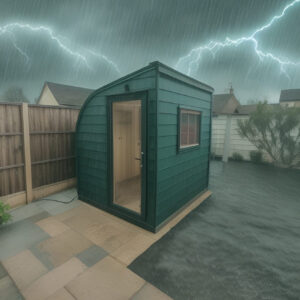
From Static Caravans to Modern Lodges: The Evolution of Park Homes
Nostalgic Memories of Static Caravans
Memories of spending time in a static caravan or park home are common. Having a beach on the doorstep brings back happy thoughts. Stunning views of rolling countryside create lasting impressions. Nestled clearings in sun-dappled woods evoke warm feelings. These memories remind us of happy childhoods and relaxing breaks.
The Mobile Homes Act: A Game Changer
Static caravans were originally designed for summer use only. However, the Mobile Homes Act of 1983 changed everything. It provided rights and protections to park home owners. These protections applied to those occupying homes as their main residence.
Simply put, it created opportunities for year-round living. Sites with permanent residence licenses became viable options. Consequently, demand grew for static caravans equipped for UK winters. Summer caravans designed for July to September were no longer practical.
Improving Thermal Performance
Manufacturers responded by adding insulation layers. Floors, walls, and ceilings received improved thermal properties. This allowed units to perform throughout the year. Additionally, permanent living required design changes. Kitchens and social areas needed complete redesigns.
Structural Limitations of Traditional Static Caravans
Despite these changes, construction remained relatively flimsy. Static caravans and park homes cannot match bricks and mortar homes. The timber batten frame lacks strength on its own. It relies on the ‘sandwich’ of inner and external materials. This provides a basic level of rigidity.
Most frames only carry horizontal framing at windows and doors. Therefore, internal walls cannot carry heavy loads. This might not seem like an issue initially. However, problems arise when adding kitchen cabinets. Anchoring a bunk bed to the wall becomes challenging.
The Rise of Modern Lodges
To provide a robust home, lodges have evolved significantly. They take the static caravan concept to the next level. Manufacturers now design far more durable and long-lasting homes.
Advanced Building Materials
Key to this evolution is the development of superior building materials. These allow for high-quality finishes. Moreover, they provide strength over time. Most lodge manufacturers have moved away from traditional wooden finishes. Wood can buckle, warp, and crack over its lifespan.
For example, Omar now uses synthetic resin. They apply it over cladding boards. Meanwhile, My Garden Studio uses composite materials. These are manufactured from 100% recycled wood and plastic. Such materials offer durability and environmental benefits.
Roof Evolution and Structural Strength
The all-important roof has evolved considerably. Many lodges now carry roof trusses. These enable a steel exterior which copes well with wind load. If necessary, they also handle snow loads effectively.
Most manufacturers use steel sheet roofs or steel shingles. All of these provide the rigidity needed. Permanent homes require this level of structural integrity.
The Cost of Lodge Living
However, this evolution from static caravan to lodge comes at a price. A fully-fitted two-bedroom lodge can exceed £200,000. That price excludes site fees entirely. As always, location is key. Some lodges command three to four times that price. This depends on which part of the country it sits.
Bespoke Lodge Solutions
If the lodge way of life appeals to you, alternatives exist. Some companies build bespoke lodges to meet your needs. They charge far less than traditional manufacturers.
My Garden Studio can create custom lodge solutions using our proven design principles. Our eLodge platform provides the foundation for larger projects. We can scale our designs to meet specific requirements. Careful consideration of your needs ensures the best return on investment.
The Future of Park Home Living
The static caravan has certainly changed from its humble beginnings. An estimated 365,000 park homes exist across the UK. This figure comes from The National Caravan Council. There is a clear trend for permanent living in this type of home.
With the current cost of living crisis, questions arise. Will next-generation lodge quality encourage traditional homeowners? A different lifestyle might become increasingly attractive. Time will tell if lodges become a mainstream housing solution.
Superior Construction Standards
For those seeking additional living space with superior construction, our approach differs. Unlike traditional park homes, we use robust engineering principles. Our structures sit on your existing property. No site fees apply. No relocation is necessary.
Our construction methods feature:
- Superior construction: 100mm insulation in walls, floors, and roofs
- Durable materials: Composite cladding that won’t warp or crack
- Year-round use: WiFi-controlled heating and full insulation
- Structural strength: Galvanised steel base and engineered framework
- Long lifespan: Built to last 30+ years
- Comprehensive warranties: 10-year structural, 40-year roof, 10-year cladding
Whether for a home office, guest accommodation, or custom lodge project, we provide flexibility. Our designs deliver quality construction without the limitations of traditional park homes.
Interested in exploring custom solutions? Get a free quote today. Discover how we can create the perfect space for your needs.





